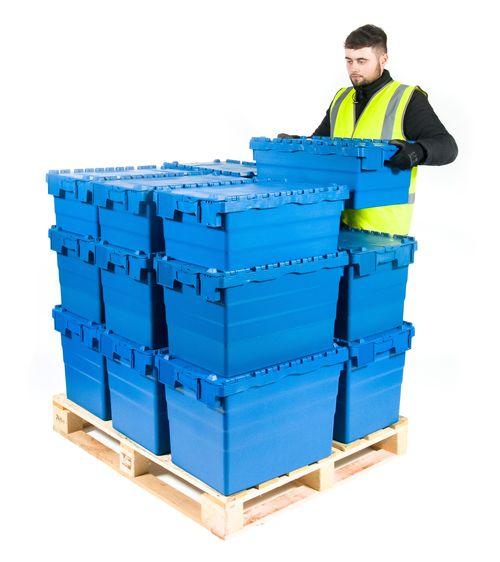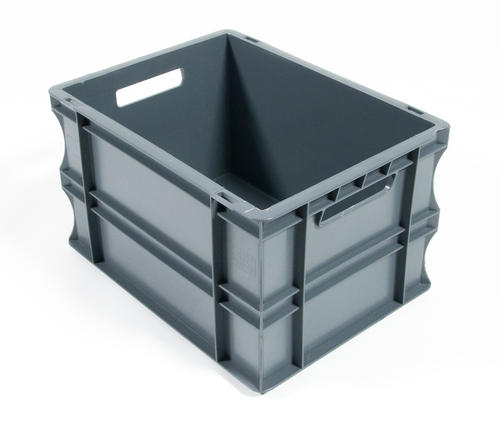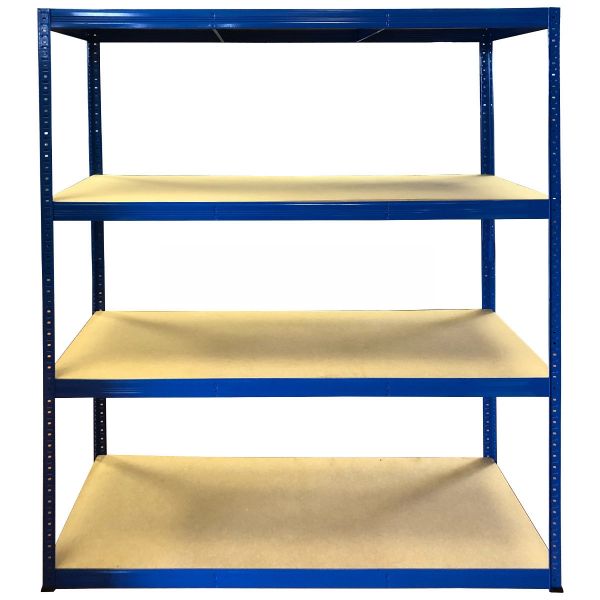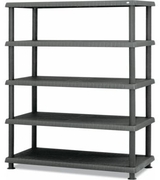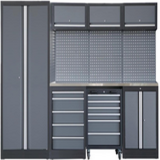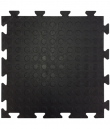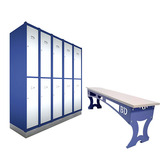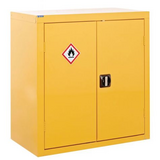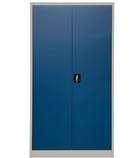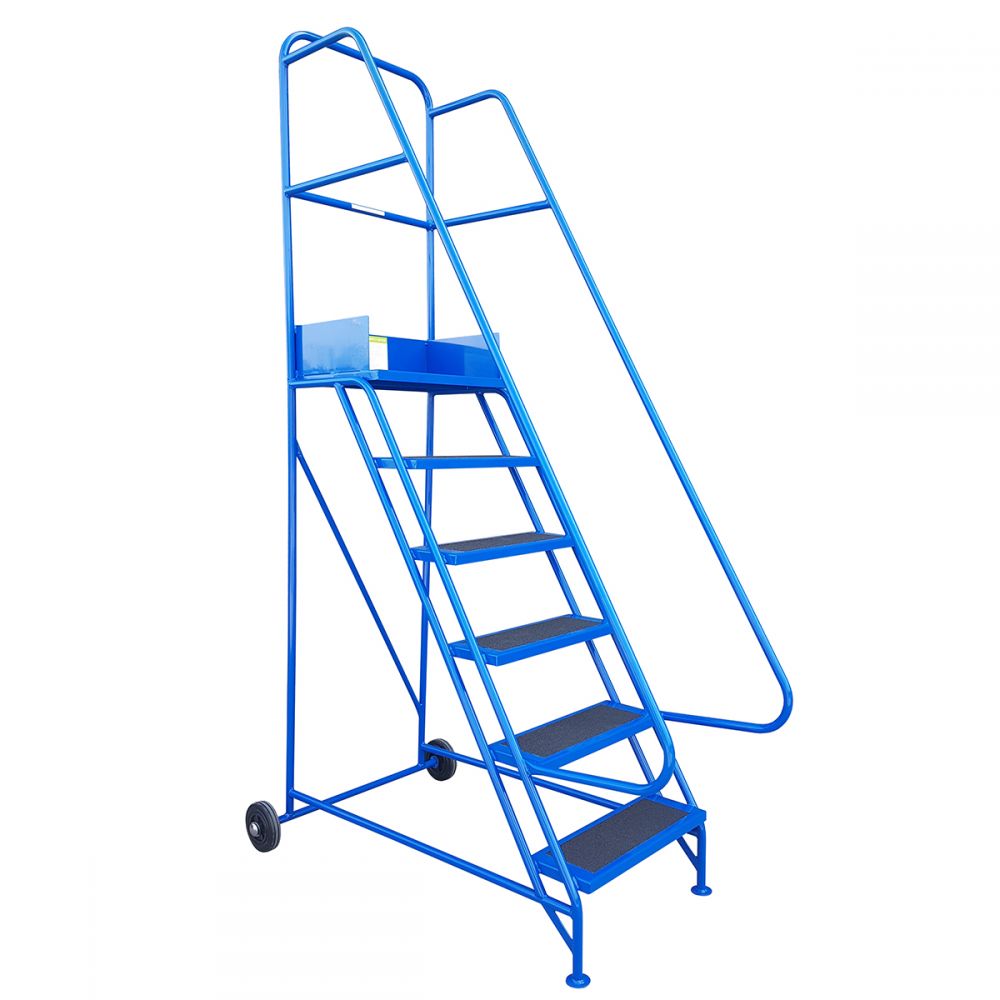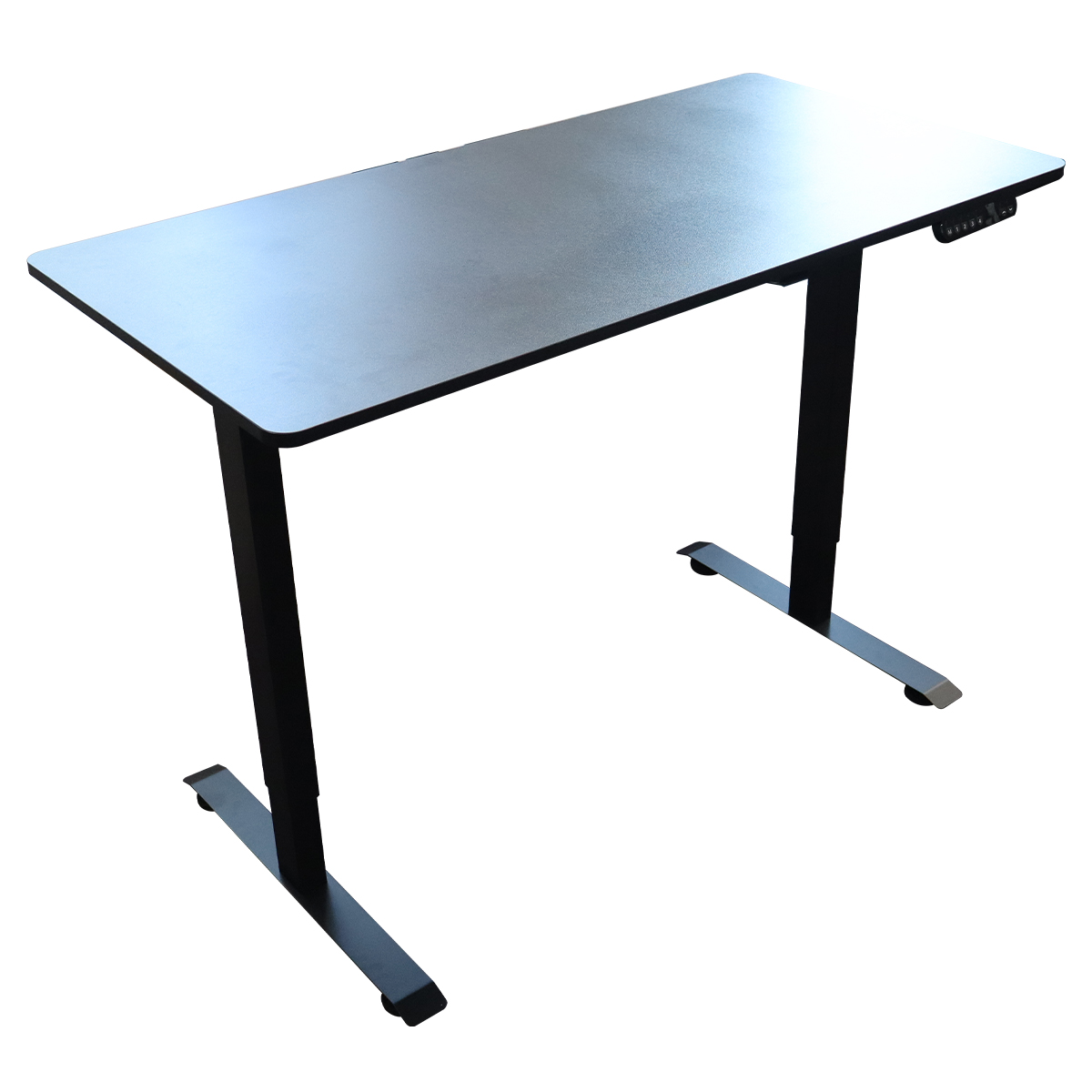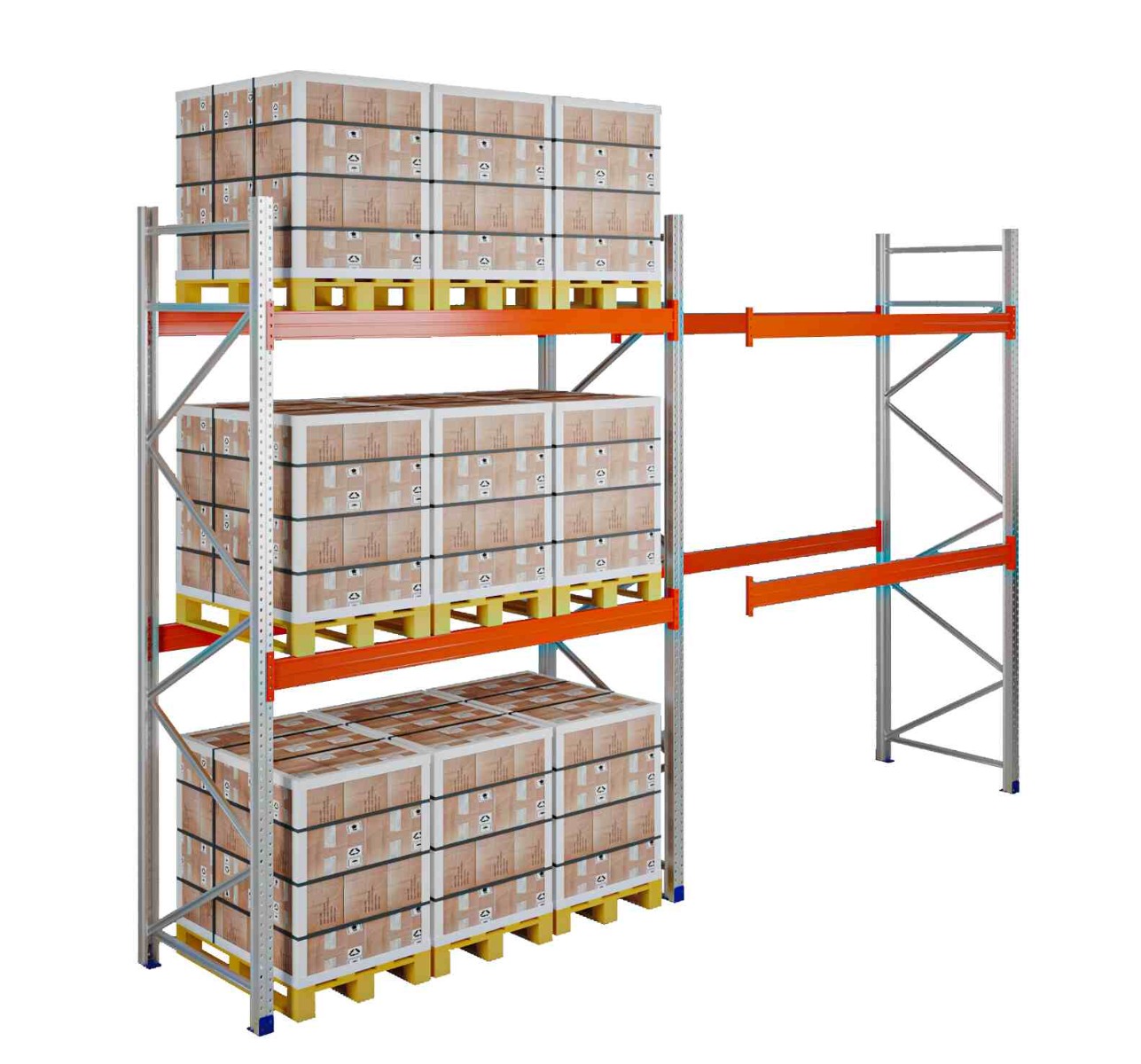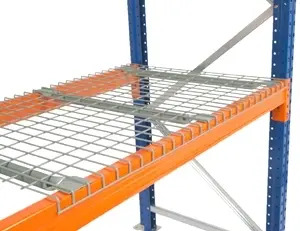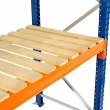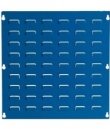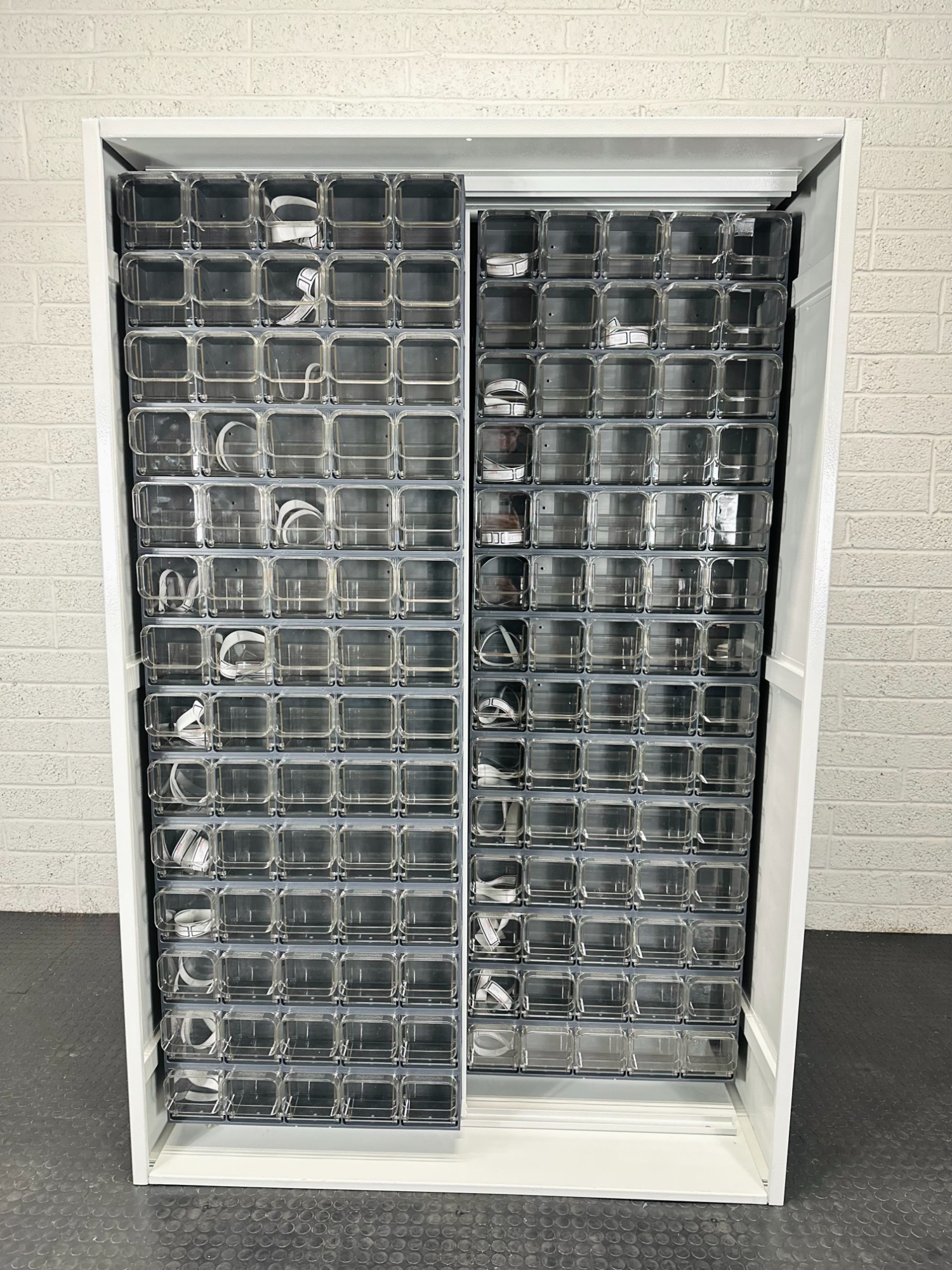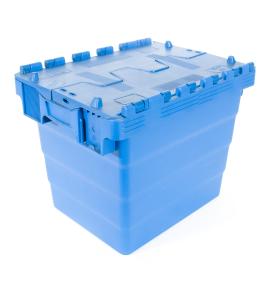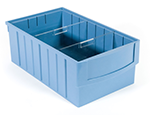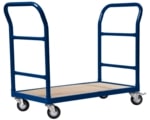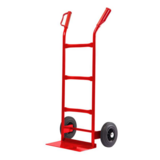The Types of Racking Systems in the Warehouse: Maximising Storage Efficiency
Choosing the right racking system is crucial for optimising warehouse efficiency and capacity. Various racking systems are available, each designed to address specific storage and logistical needs, so it helps to understand your options.
Double-deep racking systems are ideal for warehouses that prioritise storage density. They allow pallets to be stored two deep, effectively doubling capacity.
Narrow aisle racking systems offer an efficient solution for warehouses with limited floor space. They maintain storage volume while minimising aisle width.
This system complements standard pallet racking, one of the most versatile and widely used storage methods. It can handle light, medium and heavy loads.
Compact racking systems such as drive-in and drive-through are invaluable for warehouses handling high volumes of products. Compared to traditional setups, these systems can increase usable storage space by up to 85%, making them perfect for maximising warehouse capacity. Each type of racking system offers unique benefits tailored to various logistic and storage requirements.
Fundamentals of warehouse racking systems
Warehouse racking systems are crucial in optimising storage space and enhancing warehouse efficiency. They comprise various components, each with its specific function.
Defining racking systems
Warehouse racking systems are structures designed to store products and materials in a warehouse. They allow for organised and efficient space use and simplify inventory management.
Several racking systems, such as pallet racking, cater to different storage needs and space limitations.
For instance, narrow aisle racking is perfect for warehouses with limited floor space, while double deep racking maximises storage capacity by storing pallets two deep. Each system has unique features that make it suitable for specific warehouse operations.
Components of racking systems
Racking systems consist of several vital components. Frames and beams are essential parts, forming the backbone of the structure. Frames provide vertical support, while beams connect the frames horizontally to hold the weight of the stored materials.
Shelves are also common, especially in systems designed for smaller items. Depending on the weight and type of products being stored, they can be made from various materials, such as mesh or wood.
Properly installing and maintaining these components ensures the safety and efficiency of the racking system. Regular inspections are necessary to identify and fix any wear and tear. Additionally, adhering to safety guidelines helps prevent accidents and prolong the lifespan of the racking system.
Understanding these components and their roles is vital for managing a well-organised warehouse.
Types of warehouse racking systems
Different racking systems are essential for optimising storage and enhancing efficiency in a warehouse. Each type of racking offers unique benefits, depending on the specific needs for capacity and accessibility.
Selective pallet racking
Selective pallet racking is one of the most common systems. It allows direct access to each pallet, providing flexibility and accessibility. This system uses vertical space effectively, making it suitable for varied pallet sizes and weights.
It’s ideal for warehouses that store diverse products. Operators often use forklifts to place and retrieve pallets, ensuring quick and easy inventory management.
Drive-in and Drive-through racking
Drive-in and Drive-through racking systems are for high-density storage. Drive-in racks operate on a last-in, first-out (LIFO) principle, where forklifts enter the rack from one end to load and unload.
Conversely, drive-through racking allows access from both ends, following a first-in, first-out (FIFO) system.
These systems maximise storage capacity by reducing aisle space, making them suitable for bulk storage. They are ideal for warehouses with products that don’t require quick rotation.
Pallet flow racking
Pallet flow racking, or dynamic or gravity flow racking, uses inclined rails and rollers to move pallets automatically. This system is a FIFO solution, ensuring high stock rotation and efficient handling.
It’s perfect for environments requiring high-volume throughput. Pallets move smoothly from the loading to the unloading end, making it easier to manage expiry-dated products.
The design effectively reduces handling time and increases storage density by utilising vertical space.
Cantilever racking
Cantilever racking stores long, bulky items. It uses arms extending from a central column to support loads without obstructing the floor space beneath.
This system provides easy access and flexibility for storing materials like lumber, pipes and sheet metal.
Cantilever racking is adjustable, allowing the storage of items with different lengths and weights. The open design enables forklifts to quickly load and unload items, making it a versatile choice for warehouses handling oversized materials.
Design and layout considerations
Effective warehouse design and layout can significantly improve storage efficiency, accessibility and workflow. This section covers key aspects to consider when designing a warehouse racking layout.
Maximising storage space
To maximise storage space, it is crucial to select the right racking system based on the warehouse’s specific needs. Inventory size, weight, and turnover rates should guide these choices.
For instance, pallet racking systems are ideal for storing single items and palletised loads because they leverage vertical space. However, racks must be placed strategically to ensure the system’s efficiency.
Proper planning can significantly improve space utilisation so you can store more products without expanding the warehouse footprint.
Aisle width and forklift access
Aisle width is a critical factor in warehouse design. It’s essential to balance between storage space and accessibility.
Narrow aisles can increase storage density but may restrict forklift manoeuvrability. Conversely, adequate aisle width ensures efficient forklift movement and operator safety. Standard aisle widths range from 12 to 14 feet for conventional forklifts.
Proper aisle planning also facilitates quicker access to products, reducing retrieval times and improving overall efficiency in warehouse operations.
Height utilisation and vertical space
Using vertical space efficiently can significantly boost storage capacity.
Use high-reaching racking systems that allow stacking products in tiers. Pair height utilisation with proper safety measures, such as secure shelving and pallet supports. It is vital to consider the height of the warehouse ceiling and the reach capabilities of forklifts.
Implementing these strategies can turn unused air space into productive storage areas, thus maximising the warehouse’s storage potential without needing floor expansion.
Racking system installation and safety
Proper installation and strict safety protocols are crucial for effectively and securely using warehouse racking systems. These measures help ensure that the storage systems are durable and safe for everyday use.
Proper installation procedures
Installing a racking system involves various steps and requires attention to detail to ensure everything is secure and stable.
First, it’s essential to have an ergonomic warehouse design that supports efficient storage and material handling. Engineers and installers must evaluate the warehouse layout and tailor the racking setup to the specific needs.
High-quality materials like durable steel are essential for the racks. Proper bolt anchoring to the floor and correct assembly of racking components are critical for stability. Installers should follow manufacturer guidelines meticulously and use appropriate tools and safety equipment during installation.
Adequate spacing should be maintained between racks to allow easy access and manoeuvring of goods and prevent potential damage.
Safety precautions and protocols
Ensuring a safe warehouse environment starts with maintaining the structural integrity of racking systems.
Regular inspections are essential to identify any wear and tear or potential hazards. Warehouse managers should train staff on the appropriate loading techniques to avoid overloading racks, which can lead to structural failures. Strategic prevention measures, such as column protectors, can minimise damage and increase safety.
Keeping aisles clear is crucial to avoid accidents and not obstruct emergency exits.
Innovations in racking systems and their impacts
New advancements in racking systems focus on automation, sustainability, and efficiency enhancement in warehousing operations. These innovations cater to the need for higher productivity, better use of space, and environmentally friendly solutions.
Automation in racking systems
Automation in racking systems has significantly changed material handling in warehouses.
Automated storage and retrieval systems (AS/RS) have become popular for enhancing speed and accuracy. These systems use robotics and computerised controls to move goods, reducing human error and physical labour.
Types of automated systems:
- Shuttle systems: Move goods horizontally and vertically.
- Carousels: Rotate goods around a central point for easy access.
- Cranes: Retrieve goods from high-density storage areas.
Automated racking can significantly improve productivity and optimise space utilisation by efficiently managing inventory and storage.
Sustainability and material innovations
Sustainability is becoming a pivotal consideration in modern warehousing. People are increasingly adopting green materials and eco-friendly engineering practices.
Steel, commonly used in racking, is now often sourced from recycled materials, reducing the environmental impact.
Innovative materials:
- Recycled steel: Offers the same strength as new steel with less environmental impact.
- Composite materials: Lightweight yet strong, reducing transport energy and costs.
- Modular systems: Allow easy reconfiguration and reuse.
These innovations contribute to eco-friendly warehousing by reducing waste, energy consumption and carbon footprint.
Impact on warehousing efficiency
Innovations in racking systems have a direct impact on warehousing efficiency.
Modern systems like drive-in racking, mezzanine racking, and cantilever racking allow for better space utilisation and faster access to goods.
These systems support high-density storage, enabling the storage of more items in less space.
Efficiency improvements:
- Speed: Faster retrieval and storage of goods.
- Accuracy: Reduced errors in inventory management.
- Space optimisation: Better use of vertical and horizontal space.
By integrating these innovative racking systems, warehouses can handle larger volumes of goods more efficiently, cut operational costs and improve overall productivity. This will drive a more streamlined and economically viable warehousing operation.
Frequently Asked Questions (FAQs)
What are the differences between selective, drive-in, and push-back racking systems?
Selective racking allows direct access to each pallet, making it versatile and cost-effective. Drive-in racking uses a LIFO (last in, first out) method, optimising space by allowing forklifts to drive into lanes. Push-back racking involves nested carts that move along rails, which are suitable for higher-density storage.
How does pallet flow racking enhance warehouse efficiency?
Pallet flow racking uses gravity to move pallets from the loading to the picking side. This system reduces handling times and increases picking efficiency. It is excellent for first-in, first-out (FIFO) inventory management.
Can you outline the advantages of cantilever racking for prolonged or heavy items?
Cantilever racking supports long or heavy timber, pipes and metal sheets. Its design features extended arms, which make it easy to load and unload these bulky items without front columns. This system offers flexibility and unlimited horizontal space.
What considerations are essential for the installation of mezzanine racking systems?
When installing mezzanine racking systems, one must consider floor load capacity and building height. Safety measures, such as guardrails and access points, are also crucial. Proper design ensures efficient use of vertical space.
How do mobile and dynamic racking solutions compare to traditional static racks?
Mobile and dynamic racking solutions, such as mobile aisles and sliding racks, allow for compact storage and easy access. Unlike static racks, you can move these systems to create aisles where needed. They maximise space utilisation and can adapt to changing storage needs.
What factors determine the choice of racking systems for retail versus industrial warehouses?
Retail warehouses often require selective racking for fast and easy access to products. In contrast, industrial warehouses might prioritise high-density storage solutions. Inventory turnover rates, space constraints, including drive-in or pallet flow racking, and specific product types and handling requirements also influence the choice.







